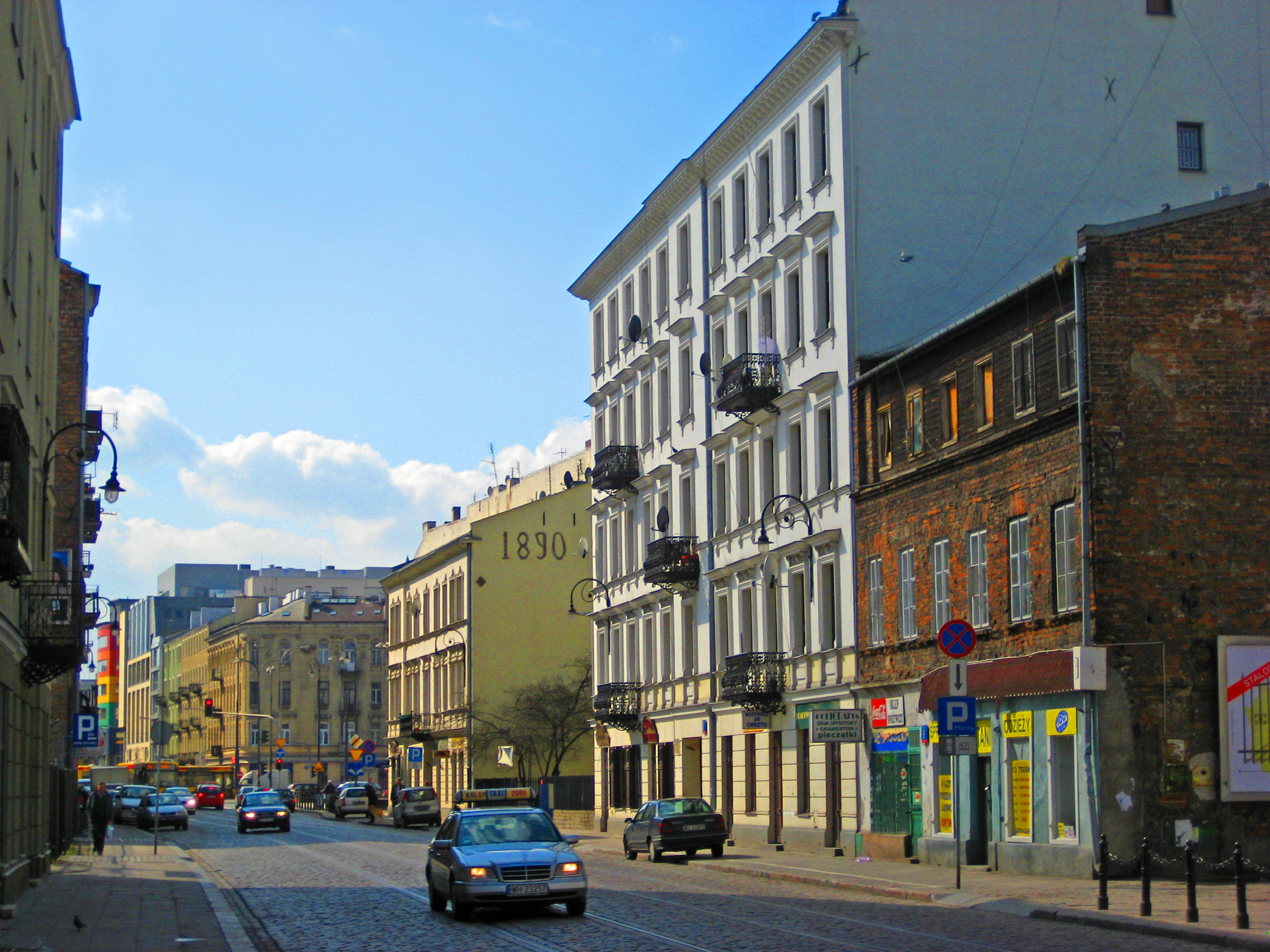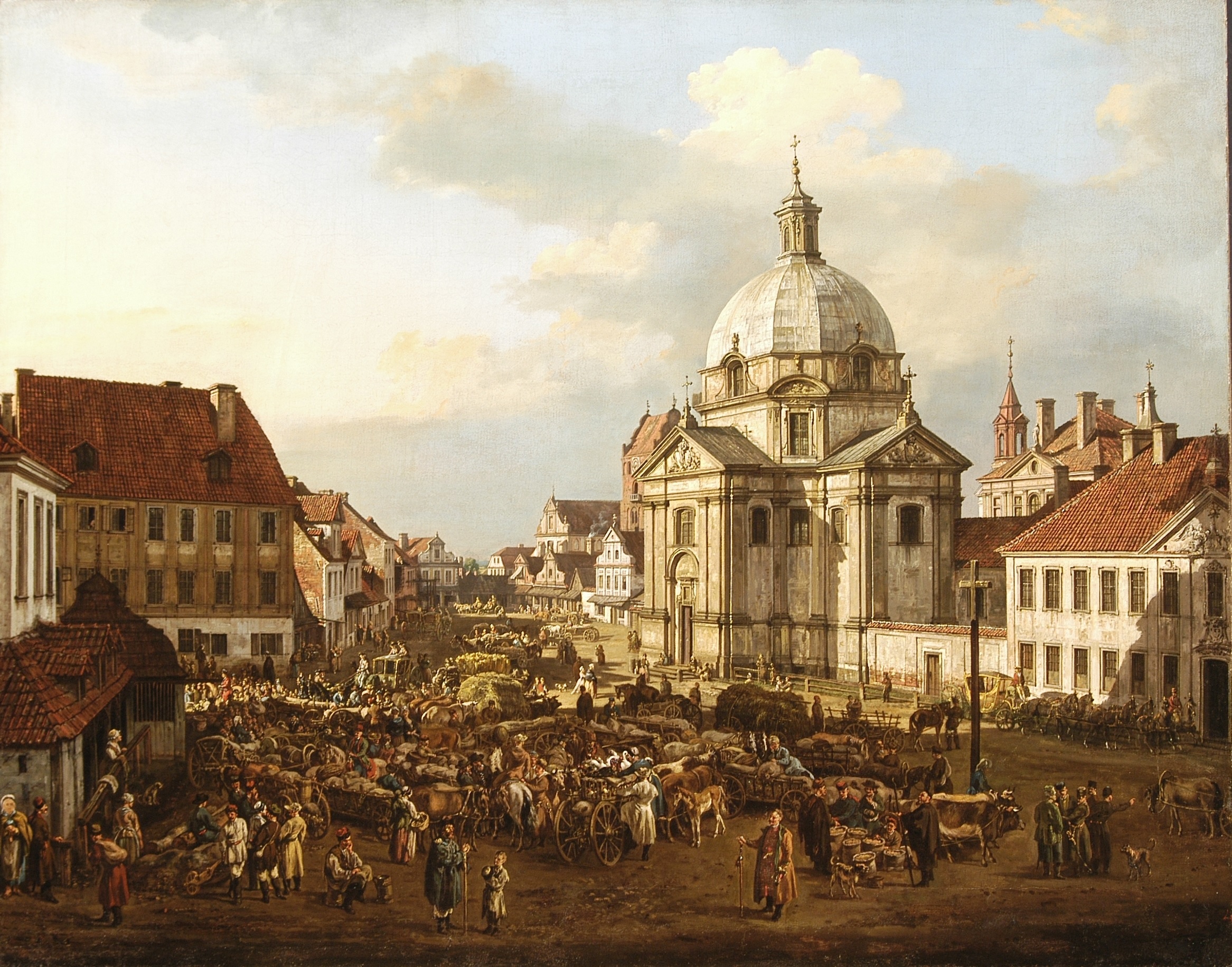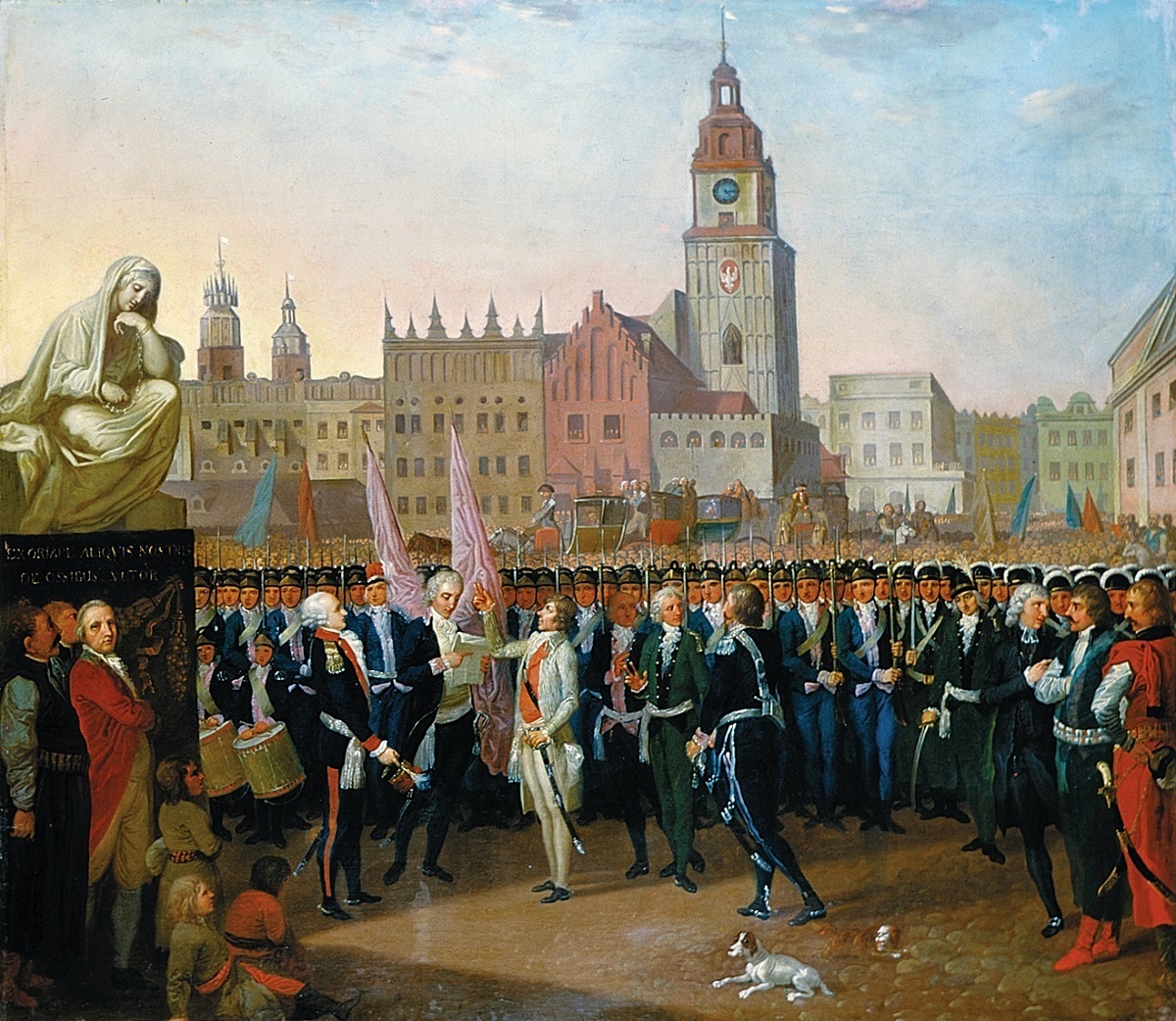|
Praga
Praga is a district of Warsaw, Poland. It is on the east bank of the river Vistula. First mentioned in 1432, until 1791 it formed a separate town with its own city charter. History The historical Praga was a small settlement located at the eastern bank of the Vistula river, directly opposite the towns of Warsaw, Old Warsaw and Mariensztat, both being parts of Warsaw now. First mentioned in 1432, it derived its name from the Polish verb ''prażyć'', meaning ''to burn'' or ''to roast'', as it occupied a forested area that was burnt out to make place for the village. Separated from Warsaw by a wide river, it developed independently of the nearby city, and on 10 February 1648 king Władysław IV of Poland granted Praga with a city charter. However, as it was mostly a suburb and most buildings were wooden, the town was repeatedly destroyed by fires, floods and foreign armies. Currently the only surviving historical monument from that epoch is the Church of Our Lady of Loreto. Alt ... [...More Info...] [...Related Items...] OR: [Wikipedia] [Google] [Baidu] |
Battle Of Praga
The Battle of Praga or the Second Battle of Warsaw of 1794, also known in Russian and German as the storming of Praga () and in Polish as the defense of Praga (), was a Imperial Russia, Russian assault on Praga, the easternmost community of Warsaw, during the Kościuszko Uprising in 1794. It was followed by a massacre (known as the Massacre of Praga) of the civilian population of Praga. Praga was a suburb ("Faubourg") of Warsaw, lying on the right bank of the Vistula river. In 1794 it was well fortified and was better strengthened than the western part of the capital, located on the left bank of the Vistula. Historian and professor Friedrich Christoph Schlosser labelled Praga as "the key to Warsaw". Eve of the battle Previous events Russian commander Alexander Suvorov inflicted a series of defeats on the rebels: the Battle of Krupczyce on 17 September, where Suvorov's 12,000 soldiers were opposed by 4,000 Polish; the Battle of Brest (1794), Battle of Brest on 19 September,—9,0 ... [...More Info...] [...Related Items...] OR: [Wikipedia] [Google] [Baidu] |
Praga-Północ
Praga-North (Polish language, Polish: ''Praga-Północ''), also known as North Praga, Praga North, is a district of the city of Warsaw, Poland, located in the central part of the city. History Praga is one of the oldest districts in Warsaw. Through the centuries, Warsaw's right-bank was an independent town. In 1648 it was granted municipal rights by the king Władysław IV Vasa. It was joined to Warsaw at the end of 18th century. In 1945 it was divided into Praga-North and Praga-South (Praga-Południe). Praga North is a district that survived the Destruction of Warsaw, devastation of war, with three different religions (Catholic Church in Poland, Catholicism, Polish Orthodox Church, Orthodoxy and History of the Jews in Poland, Judaism) peacefully co-existing. A major part of the buildings in this area have preserved its historical origins which makes it one of the best-preserved area of old buildings in the capital. In the district there are many streets which remained undamaged ... [...More Info...] [...Related Items...] OR: [Wikipedia] [Google] [Baidu] |
Praga-Południe
Praga-Południe (), also known by its anglicized names Praga-South, Praga South, and South Praga, is a district of the city of Warsaw, Poland located on the east bank of the Vistula River. It consists of Grochów, Gocław, Kamionek and Saska Kępa. History The area of today's Praga-South has been inhabited since at least the 7th century. There are traces of settlements established earlier than Warsaw itself. However, the swampy and often flooded terrain was deserted as soon as Warsaw was founded. Since the 16th century it was again populated, but due to lack of communication with Warsaw (until the 19th century there were no permanent bridges across the Vistula at Warsaw) it was an unimportant suburb. It shared the fate of a greater area named Praga, which was the easternmost suburb of Warsaw. In the 17th century one of the areas of present Praga-South was turned into a military camp. In the 18th century part of the area was named Saska Kępa (literally ''Saxon Rise'') after ... [...More Info...] [...Related Items...] OR: [Wikipedia] [Google] [Baidu] |
Warsaw District Praga 1939
Warsaw, officially the Capital City of Warsaw, is the capital and List of cities and towns in Poland, largest city of Poland. The metropolis stands on the Vistula, River Vistula in east-central Poland. Its population is officially estimated at 1.86 million residents within a Warsaw metropolitan area, greater metropolitan area of 3.27 million residents, which makes Warsaw the List of cities in the European Union by population within city limits, 6th most-populous city in the European Union. The city area measures and comprises List of districts and neighbourhoods of Warsaw, 18 districts, while the metropolitan area covers . Warsaw is classified as an Globalization and World Cities Research Network#Alpha 2, alpha global city, a major political, economic and cultural hub, and the country's seat of government. It is also the capital of the Masovian Voivodeship. Warsaw traces its origins to a small fishing town in Masovia. The city rose to prominence in the late 16th cent ... [...More Info...] [...Related Items...] OR: [Wikipedia] [Google] [Baidu] |
Warsaw, Poland
Warsaw, officially the Capital City of Warsaw, is the capital and largest city of Poland. The metropolis stands on the River Vistula in east-central Poland. Its population is officially estimated at 1.86 million residents within a greater metropolitan area of 3.27 million residents, which makes Warsaw the 6th most-populous city in the European Union. The city area measures and comprises 18 districts, while the metropolitan area covers . Warsaw is classified as an alpha global city, a major political, economic and cultural hub, and the country's seat of government. It is also the capital of the Masovian Voivodeship. Warsaw traces its origins to a small fishing town in Masovia. The city rose to prominence in the late 16th century, when Sigismund III decided to move the Polish capital and his royal court from Kraków. Warsaw surpassed Gdańsk as Poland's most populous city by the 18th century. It served as the capital of the Polish–Lithuanian Commonwealth u ... [...More Info...] [...Related Items...] OR: [Wikipedia] [Google] [Baidu] |
Ząbkowska Street, Warsaw
Ząbkowska Street is one of the oldest streets in Warsaw, Poland, located in the Praga-Północ district. It runs east from Targowa Street and is around one kilometre long. Considered one of the most interesting tourist destinations, it is famous for historical buildings, namely tenement houses that were built at the turn of the 20th century. History Before the First World War Ząbkowska Street was inhabited mainly by Jewish Jews (, , ), or the Jewish people, are an ethnoreligious group and nation, originating from the Israelites of History of ancient Israel and Judah, ancient Israel and Judah. They also traditionally adhere to Judaism. Jewish ethnicity, rel ... people. In most cases, they were real estate owners, traders, and entrepreneurs as they belonged to higher levels of the middle class of society. At the beginning of the 20th century, Praga district (later divided into Praga-Północ and Praga Półudnie, Eng. Praga-North, Praga-South) consisted only of a coupl ... [...More Info...] [...Related Items...] OR: [Wikipedia] [Google] [Baidu] |
Roman Catholic Diocese Of Warszawa-Praga
The Diocese of Warszawa-Praga () is a Latin Church diocese of the Catholic Church located in the east part of Warsaw (Praga) in the ecclesiastical province of Warszawa in Poland. According to the church statistics about 31.4% attended a church at least once a week and about 14.6% took communion regularly (once a week or more often) in 2013. History * March 25, 1992: Established as Diocese of Warszawa – Praga from the Diocese of Płock and Metropolitan Archdiocese of Warszawa * May 24, 2008: Archbishop Henryk Hoser S.A.C., adjunct secretary of the Congregation for the Evangelization of Peoples and president of the Pontifical Mission Societies, was appointed as bishop of Warszawa-Praga (area 3,300, population 1,113,000, Catholics 1,088,000, priests 650, religious 1,623), Poland. He conserves his personal title of archbishop. Notable churches Cathedral Basilica of St. Michael the Archangel and St. Florian *Minor Basilicas: ** Bazylika Najświętszego Serca Jezusowego in Praga ... [...More Info...] [...Related Items...] OR: [Wikipedia] [Google] [Baidu] |
Kościuszko Uprising
The Kościuszko Uprising, also known as the Polish Uprising of 1794, Second Polish War, Polish Campaign of 1794, and the Polish Revolution of 1794, was an uprising against the Russian and Prussian influence on the Polish–Lithuanian Commonwealth, led by Tadeusz Kościuszko in Poland-Lithuania and the Prussian partition in 1794. It was a failed attempt to liberate the Polish–Lithuanian Commonwealth from external influence after the Second Partition of Poland (1793) and the creation of the Targowica Confederation. Background Decline of the Commonwealth By the early 18th century, the magnates of Poland and Lithuania controlled the state – or rather, they managed to ensure that no reforms would be carried out that might weaken their privileged status (the " Golden Freedoms"). Through the abuse of the '' liberum veto'' rule which enabled any deputy to paralyze the Sejm (Commonwealth's parliament) proceedings, deputies bribed by magnates or foreign powers or those sim ... [...More Info...] [...Related Items...] OR: [Wikipedia] [Google] [Baidu] |
Church Of Our Lady Of Loreto
The Church of Our Lady of Loreto () is an ornate church in Praga, a district of Warsaw, Poland, on the east bank of the Vistula River. The church stands on ''Ratuszowa'' (City Hall) Street and is Praga’s oldest monument. What may be seen today is a former chapel that on its south side was once attached to a baroque church and a Bernardine (''Minor Friars'') monastery. History A chapel is all that remains of the old building that used to stand adjacent to the Bernardine church and monastery. On 4 October 1617 the cornerstone of the baroque church was laid in the presence of King Sigismund III Vasa. The St. Andrew's church was constructed between 1628 and 1638. The Loreto Chapel was built between 1640 and 1642, in the southern part of the shrine. The construction was financially supported by King Władysław IV Vasa and Queen Cecilia Renata. Other members of the royal family, especially king's brothers, also participated in the construction. The chapel was built according ... [...More Info...] [...Related Items...] OR: [Wikipedia] [Google] [Baidu] |
Mariensztat
Mariensztat () is a historic neighbourhood along the Vistula river in central Warsaw, the capital of Poland. Situated between the riverbank and the UNESCO-protected Warsaw Old Town, Old Town, Mariensztat is part of the larger Warszawa-Śródmieście, Śródmieście (Downtown) borough and is one of the city's smallest neighbourhoods. History Most of contemporary Mariensztat was once beneath the water level, however, as the waters in the Vistula shifted eastward, more land on the river's western bank emerged and became available for settlement. The historical neighbourhood was officially established in 1762, when local nobleman Potocki, Eustachy Potocki married Maria Kątska and received the parcel of land as part of Kątska's dowry. He established a ''jurydyka'' (an administrative self-governing exclave of the city) and named the settlement ''Maryenstadt'' after his wife, adding the German language, German suffix ''stadt'' to please the Augustus III of Poland, Saxon king of Poland. ... [...More Info...] [...Related Items...] OR: [Wikipedia] [Google] [Baidu] |
Monument To Brotherhood In Arms
The Monument to Brotherhood in Arms () was erected in in Warsaw's Praga district, in 1945, to commemorate the joint fight of Polish and Soviet soldiers against Nazi Germany. In 2011, it was temporarily taken down during the construction of an underground railway station and sent to restorers. However, when it was about to be reinstalled, a minority of Praga's residents objected, as they perceived the monument as a remnant of the Communist era. In surveys carried out by the city council and Gazeta Wyborcza in 2012 and 2013 respectively, the majority of Warsaw's residents said they would like the monument to be returned to its original place or placed somewhere nearby. In 2015, the Warsaw City Council Warsaw City Council, officially the Council of the Capital City of Warsaw () is a unicameral governing body of the city of Warsaw, the capital of Poland. The council was first created following the location of Warsaw under the terms of the Magdebu ... overturned its earlier decision ... [...More Info...] [...Related Items...] OR: [Wikipedia] [Google] [Baidu] |







